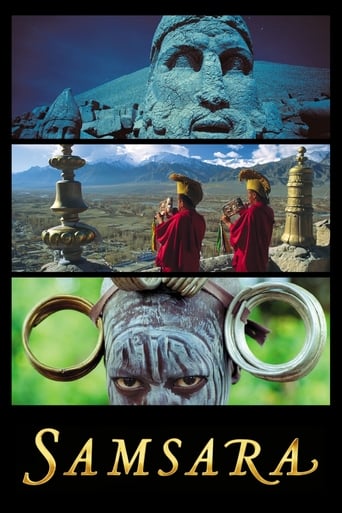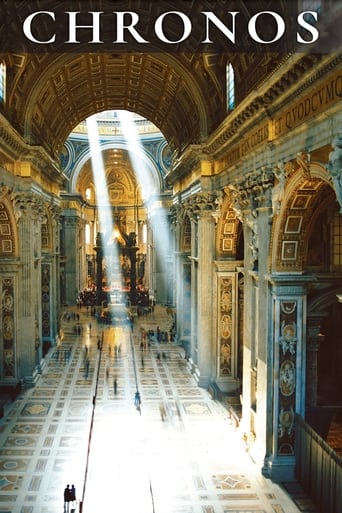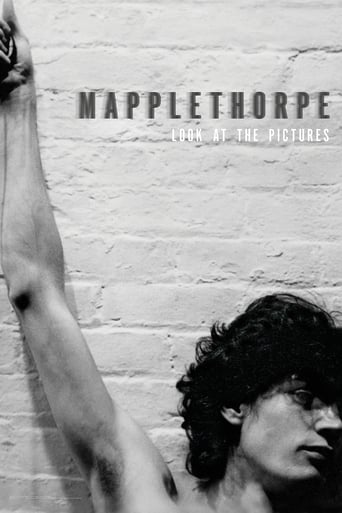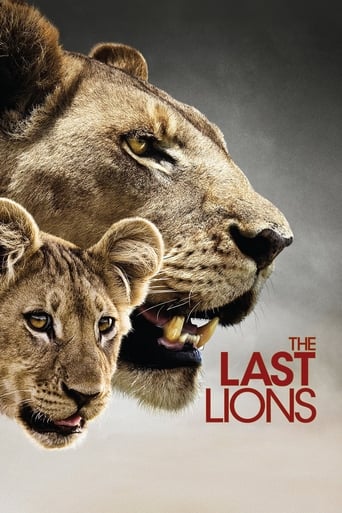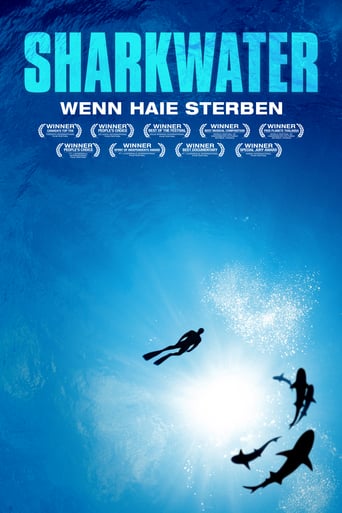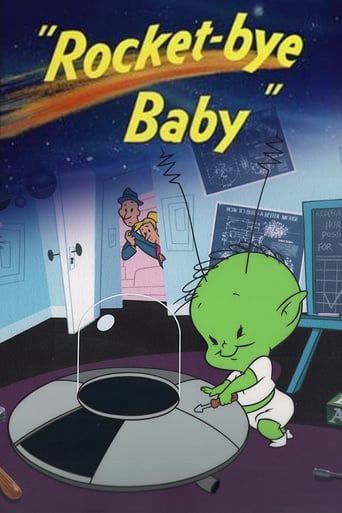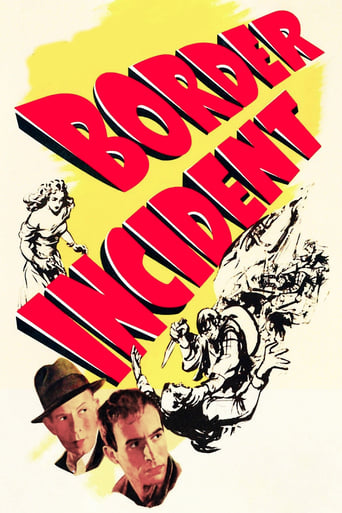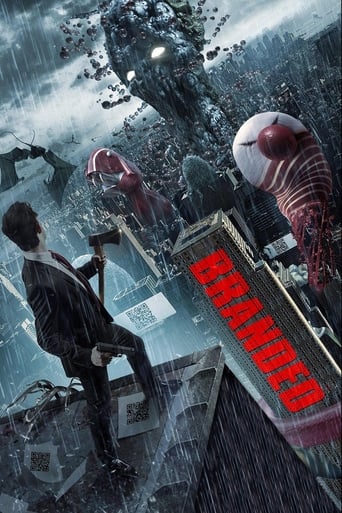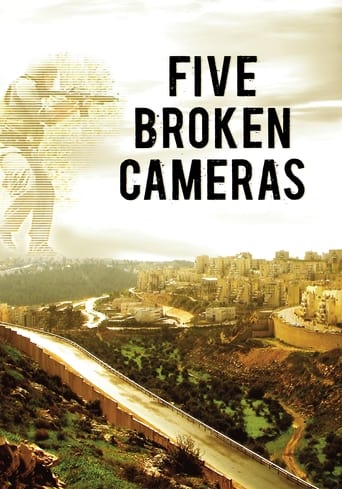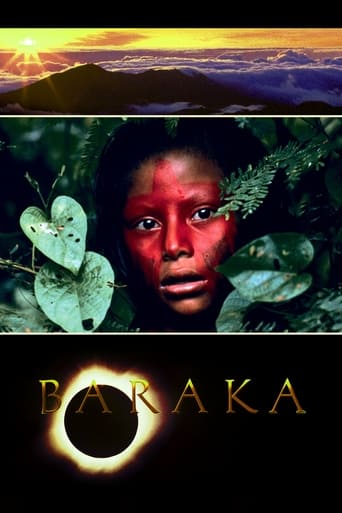


Baraka
A paralysingly beautiful documentary with a global vision—an odyssey through landscape and time—that attempts to capture the essence of life.
-
- Cast:


Similar titles
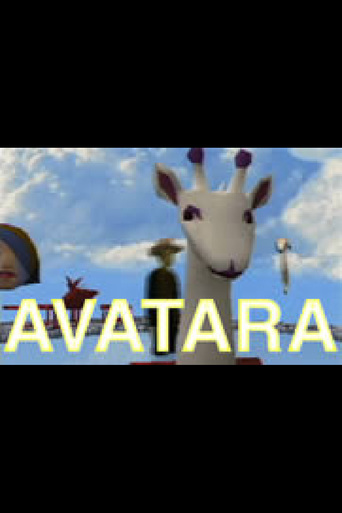

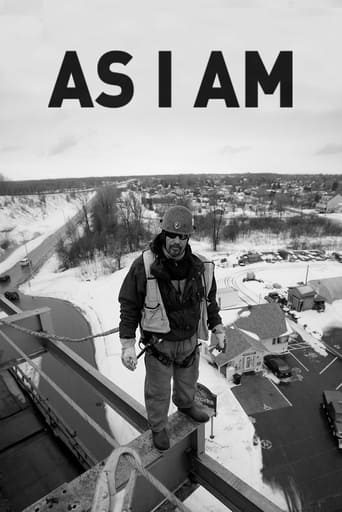
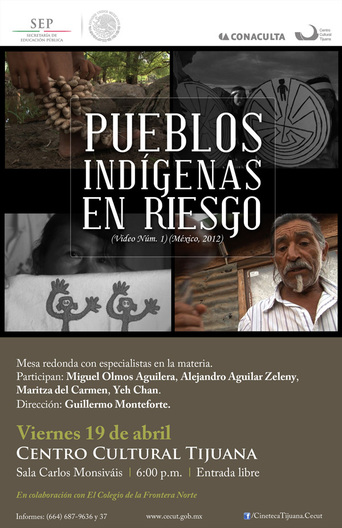
Reviews
Such a frustrating disappointment
Pretty Good
Excellent but underrated film
I am only giving this movie a 1 for the great cast, though I can't imagine what any of them were thinking. This movie was horrible
When watching 'Baraka', one might think about such questions as 'What does this mean?' or 'What's the point?' When it comes to a film like this, nobody can tell you what the point is. It's like looking out of the window, seeing the children playing, the birds chirping in the trees, the sun touching the horizon and the clouds gathering high in the sky, and asking, 'What's the point?' I don't know what the point is in life or in the world. They just are. Like 'Baraka' just is. It is what it is: a look at what is happening, a look at the things that exist. It is not taking a stand on anything, not offering explanations or making judgments. The only meanings that we attach to these images are preconceived. Like the poor little chicks getting their beaks burned and tossed around in a metal tube. It's not the film that is saying this is wrong. It is simply showing us.When you turn off 'Baraka' saying it's boring and you don't get it, you are in fact closing your eyes to the world around you and saying it's not worth looking at.However, I'm only giving it a 9 because I think 'Koyaanisqatsi' and 'Samsara' achieved similar goals even better and 'Baraka' seems a bit lighter in comparison.
i can see how this documentary -or i should say masterpiece- is one of the best films ever made in history of documentary films and all of cinema, before i watch this film i watched his little brother Samsara (2011) long time ago, i liked it, but not like this one, in Samsara they concentrate more on the architecture, but Baraka is more about human life and religion, this theme tell us how we humans are so close.. yet so far away.The best thing i liked about this film is how you can see and feel the connection between the scenes, and how mankind is treating earth and nature, in good and bad ways, and how our decisions can make a huge different in this fragile world.
Baraka showed, how we were a part of nature and how we detached ourselves from it, to become a being, who are just using/abusing nature and where it have lead us to. Baraka explores the most beautiful and breathtaking landscapes one can ever imagine. Director Ron Fricke used a special time lapse camera that he invented for this film. He had used his imagination in the ways that will blow your mind. I loved this movie for the way The Earth was explored and how the small pieces were put together to show nature, landscapes, wildlife, culture, believes, society, industrialization, urbanization, war. Most amazing thing is the usage of time lapse camera, and i can watch those scenes again and again. This is a must watch for nature-lovers.
The same comments apply here as in Koyannisqatsi. Yes, it captures a myriad beautiful things, ecstatic dances natural and manmade. Yes it shows conflicting urges in humankind for transcendence and destruction. It wants to elevate us to a vantage point from which to view a larger world that we would call spiritual.In the silent era they were making "city symphonies" to eulogize the booming modern city, this would be a "world symphony". But it eulogizes a simplistic view. It all issues forth from a hopelessly Eurocentric view that finds exoticism in faraway places, sacredness in monument, purity and ceremony to be the same thing.But see, spirituality is not sending a postcard back home from a temple you visited, it's learning to see this world anew, every small thing that you come across. It's an entire way of seeing. At the root of a transcendent vision is the Zen koan of koans, the question who is it that sees?And this is simply not made from someone who can see farther than the monument he wants to erect. We fly from the pyramids to the Angkor Vat to Persepolis in a matter of minutes, gorging instead of harking. We fly from tribal dances to the urban dances of traffic to the devotional dance of pilgrims around Mecca. We cut from Japanese businessmen in their modern hotel capsules to stylized shots of a Buddhist monk in the street with his alms bowl. Nature is never allowed to be itself, it has to be nature as we want it to be, a Rennaisance notion that is at odds with modernity. See, for this filmmaker it takes nothing short of the Taj Mahal at sunset to comprehend the world's beauty and nothing short of Kuwait oil fields ablaze to comprehend the destruction. There's a truly astonishing sequence of rebirth near the end, with a solar eclipse and an African dancer bouncing up as if a soul is leaving to return. But all of it together has the adverse effect. We see the mundanity of the sacred and not the opposite, which is the spiritual essence. This is a touristy view by someone who thinks that going to Bodh Gaya to meditate under the bodhi tree will grant special insight, that it will take nothing short of a sacred place. Either way you may appreciate this verse:A monk asked, "When there's not a single cloud for ten thousand miles, then what?"Zen Master Baoshou said, "The clear sky also gets the staff!" The monk said, "I don't understand why the clear sky has an error."Baoshou hit him with his staff.

